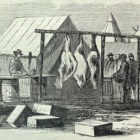THREE YEARS IN THE CONFEDERATE SERVICE: Chapter 1
Company K First Alabama Regiment
THREE YEARS IN THE CONFEDERATE SERVICE: CHAPTER I.
by
DANIEL P. SMITH
PRATTVILLE, ALA
PUBLISHED BY THE SURVIVORS 1885
Editied by Terry W. Platt
Enhancements and Notations Copyright © 2019 Terry W. Platt
ORGANIZATION OF THE JOHN GILL SHORTER ARTILLERY
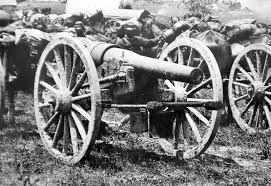
In February, 1862, John F. Whitfield, Esq., obtained the authority to recruit one of the three companies necessary to complete the reorganization of the First Alabama Regiment, C. S. A., serving at that time as heavy artillery at Pensacola, Fla. Meeting with Merrill E. Pratt, Esq., of Prattville, he proposed to that gentleman to raise one half the company, he himself expecting to bring thirty or forty men into the field. Mr. Pratt was thinking, at this time, of joining another regiment with a small squad of men, who desired to be with him in the army, but, seeing now a wider field for usefulness, he accepted the proposal. In a few days, through his personal influence and popularity, he enrolled the names of nearly fifty volunteers, including some of the best men in Autauga county, and, had he not been restricted by the terms of his agreement with Capt. Whitfield, he could, without difficulty, have recruited a full company. On the 7th of March, Lieut. Pratt and his men proceeded to Montgomery, and, on the following day, were mustered into the service of the Confederacy, styling themselves, in honor of the Governor of the State, the “John Gill Shorter Artillery.” John F. Whitfield was elected Captain; M. E. Pratt, First Lieutenant; Dixon S. Hall, Second Lieutenant, Jr.; and Charles E. Tuttle, Orderly Sergeant. The second lieutenancy was left vacant, to be filled by the squad of men Capt. Whitfield still expected to secure. For the failure of these men to report, Capt. Whitfield was in no manner responsible, he acting throughout in good faith. No officer had more the confidence and affection of his men than Capt. Whitfield, and this esteem he retained from first to last.
While in Montgomery, enameled cloth knapsacks and haversacks, and cedar canteens, were issued to the men, but they provided their own uniforms, no two of which were alike.
CHANGE OF DESTINATION AT ISLAND 10
When enrolled the men expected to go to Pensacola, but upon arriving in Montgomery, it was learned that the regiment had left that place for New Madrid, Mo., a fortified post on the Mississippi River. As this change in destination, from a warm to a cold climate, and from garrison to field duty, necessitated a change in clothing, leave of absence for two days was given the members of the company to return home and make needed preparations. There was a general cutting down in the amount of impedimenta, though most of the men loaded themselves with twice the amount that could be carried on a march.
On the morning of March 10th, the company reassembled in Montgomery, and, under the command of Lieut. Hall, started for Memphis. Monday night they camped at Atlanta, not being able to proceed farther on account of the crowded trains. It was not till Wednesday noon that the company reached Memphis. The regiment was just leaving the city by the boat, and could not wait for the company to join ; Lieut. Hall, however, reported, and received orders to proceed by the steamer “ Republic,” which left the next day at 5 p. m.
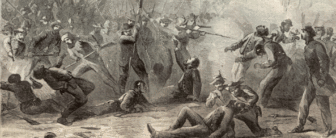
Thursday night the boat reached Fort Pillow, where it was learned that New Madrid had been evacuated, and that the First Alabama had been ordered to Island No. 10.
ROLL OF COMPANY K

Friday evening the “ Republic ” arrived at Tiptonville, and the men disembarked; but, the boat being detained, they slept on board that night. Saturday they again landed, and marched across from Tiptonville to Island No. 10, a distance of six miles. The regiment was found encamped without tents in a newly-cleared field, and the company, thus early in its service, began roughing it. It was not till the 18th that they received any tents; they then were moved into a wood, some three-quarters of a mile from the river. On the 25th the camp was again moved, and tents pitched in regulation order in an open field in the rear of Batteries Nos. 5 and 6; a camp guard was detailed, and the military routine of guard-mounting, drill and dress-parade began.
Capt. Whitfield and Lieut. Pratt arrived on the 18th, receiving a hearty welcome. There now being no hope of the other squad reporting, it was decided that Lieut. Pratt should return home and recruit the company to its full strength.
Lieut. Dixon S. Hall was promoted to the second lieutenancy, and Orderly Sergt. C. E. Tuttle, who had ably performed his duties and looked after the comfort of the men, was made junior second lieutenant. The following is the roll of the company, as it stood at that time:
Captain , John F. Whitfield
First Lieutenant , Merrill E. Pratt
Second Lieutenant, Dixon S. Hall
Second Lieutenant, Jr., Charles E. Tuttle
Orderly Sergeant, Norman Cameron
Second Sergeant, A. J. Thompson
Third Sergeant, J. C. Rodgers
Fourth Sergeant, A. J. Merritt
Fifth Sergeant, E. T. Sears
First Corporal, John Williamson
Second Corporal, W. L. Ellis
Third Corporal, J. M. Royals
Fourth Corporal, W. H. Hutchinson
N. K. Adams
O. M. Blaylock
A. P. Brown,
E. F. Brown,
W. A. Dennis,
W. Farmer,
Wm. H. Fay,
John Griffin,
Elijah Hearn,
J. C. Hearn,
J. G. Holston,
J. W. Killough,
C. J. Moncrief,
Daniel P. Smith,
Mac. A. Smith,
J. L. Robinson,
G. H. Royals,
T. J. Roe’
E. L. Averheart,
G. R. Bledsoe,
C. W. Brown,
J. W. Cook,
J. H. Durden,
John Frank, Jr.,
J. A. Fergerson.
M. M. Hancock,
G. W. Hearn,
J. W. Hearndon,
Joseph Hurd,
J. M. May,
W. L. Moncrief,
J. F. Smith,
Junius Robinson,
C. H. Royals,
J. D. Rice,
J. G. Tarleton,
Privates.
J. S. Tunnell,
Joseph Tunnell,
Fletcher Wilkins.
Total, 4 commissioned officers, 9 non-commissioned officers and 39 privates.
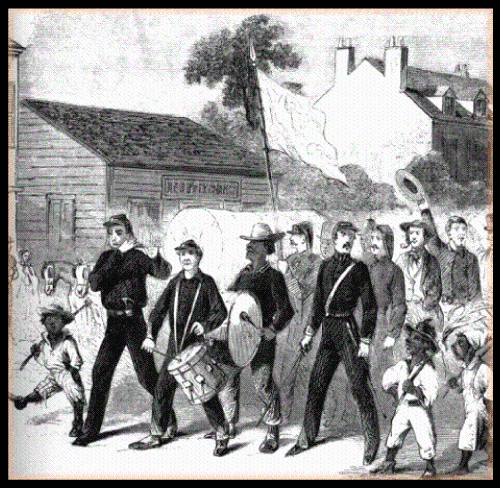
W. H. Hutchinson was soon after detailed as a member of the drum corps, and O. M. Blaylock was appointed corporal in his stead. Joseph Hurd was detailed at the same time as fifer. All the above were present for duty, except Private Griffin, who received a furlough when he enlisted, and reported to Capt. Isbell after the surrender of the Island. Muskets were not issued to Co. K for two weeks after their arrival, but details for fatigue and guard duty were made after a few days. When Capt. Rucker’s company was relieved at Battery No. 1, on the third or fourth day of the siege, a detail of sixty men from the First Alabama was ordered there, with daily relief. Co. K furnished four or five men of this detail.
MYSTERIES OF THE CUISINE
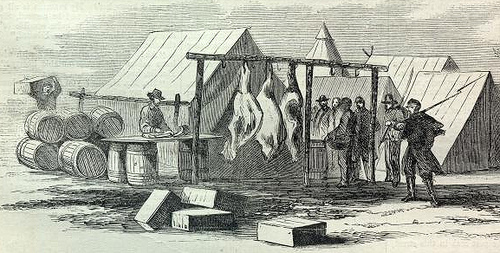
The men were quickly initiated into the mysteries of the cuisine, and from the first day some were quite good cooks, while others made most amusing blunders. A camp-kettle, half full of rice, was a source of much worry to an amateur who attempted to boil it—there were not enough utensils in the company to hold South Carolina’s favorite dish as it swelled in the pot.
A SHAMEFUL WASTE
Commissary stores were plentiful, and there was a shameful waste. Fresh beef was hauled off and buried by the wagon load; barrels of corned beef remained untouched in the camp; while rice, flour, molasses and sugar were issued in larger quantities than could possibly be eaten. These were the last days of the “ Flush times of the First Alabama.”
On the 30th of March, Lieut. Pratt and Corp. Ellis left for Alabama to enlist recruits. About the same time Privates M. A. Smith and J. L. Robinson were honorably discharged on account of physical disability, and left for their homes.
